— 神游“云中之国”不丹系列(九)
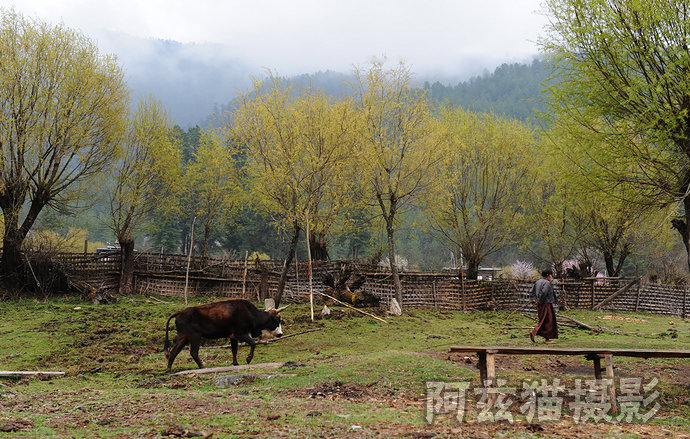

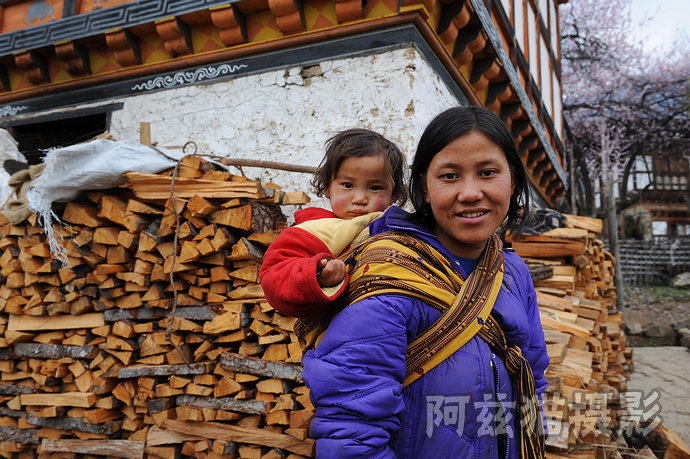
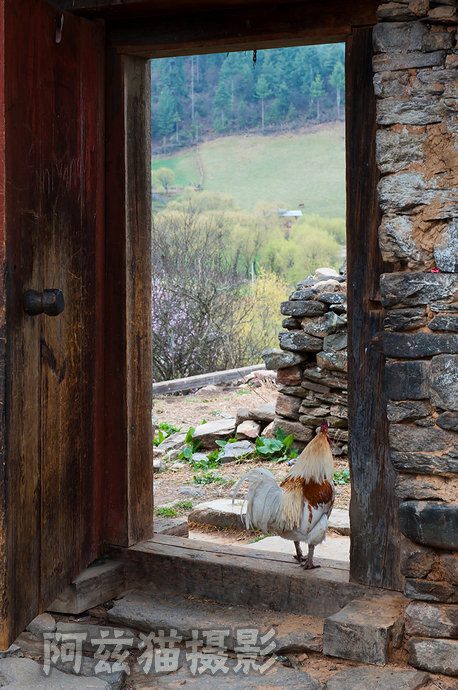

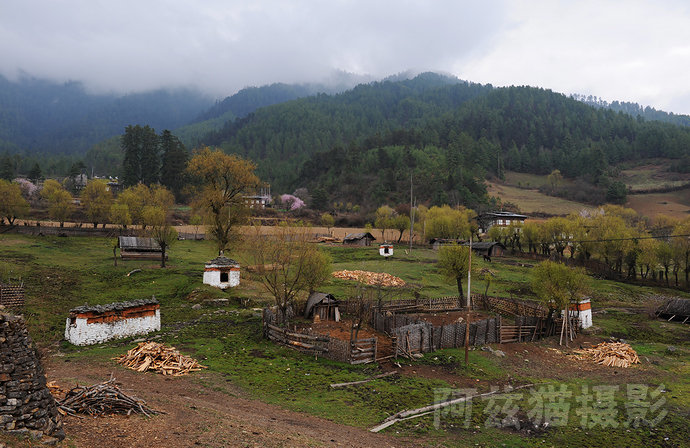
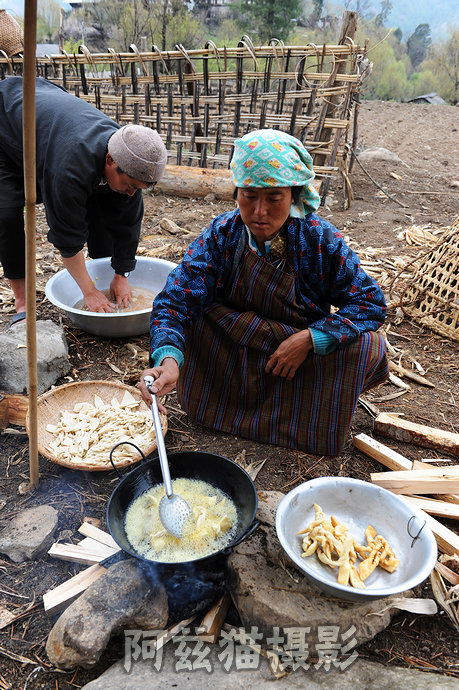
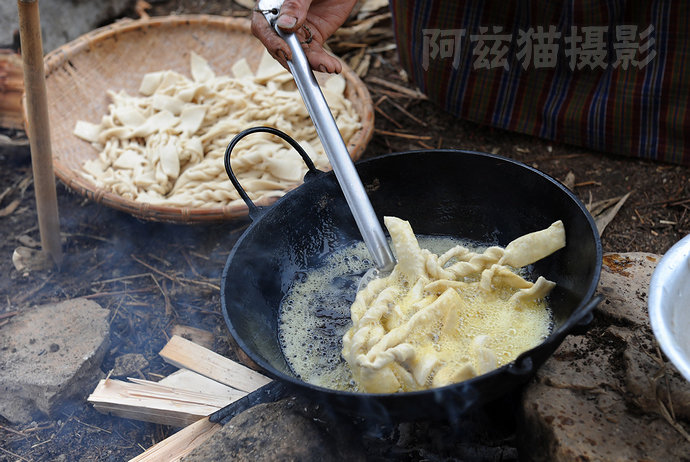
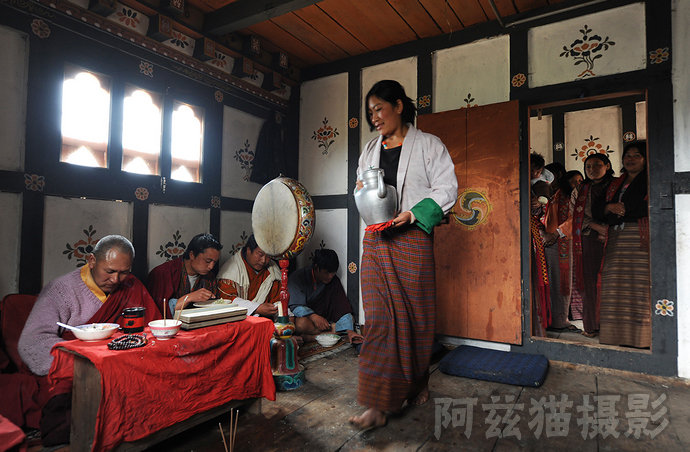
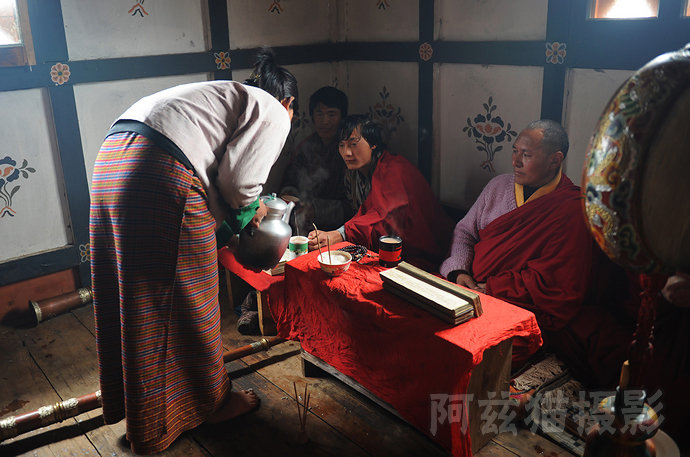

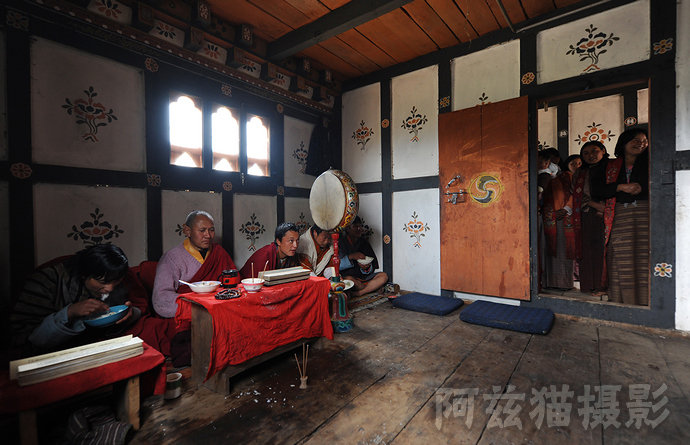
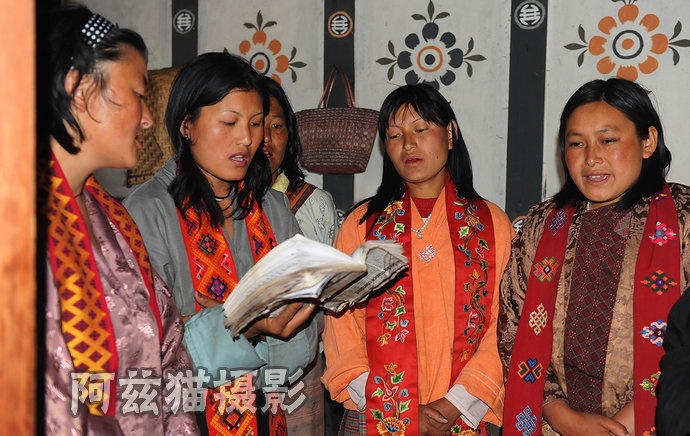
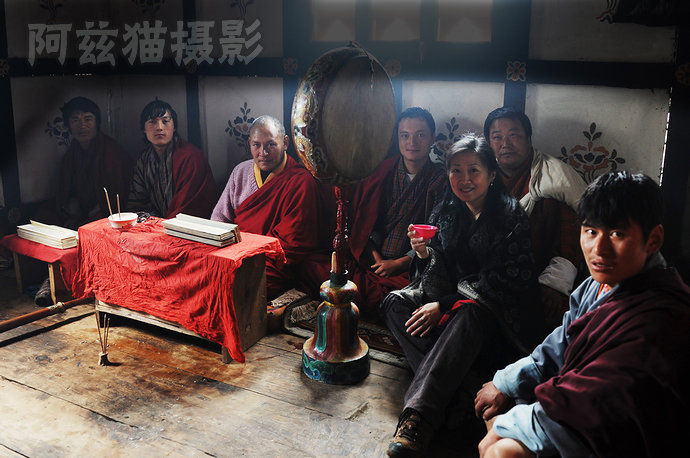

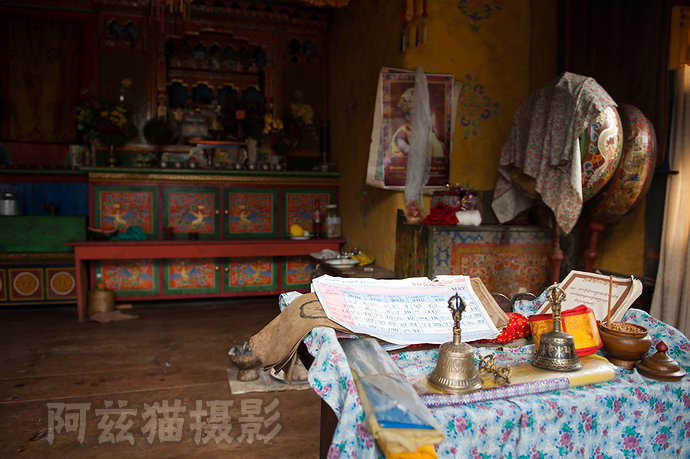

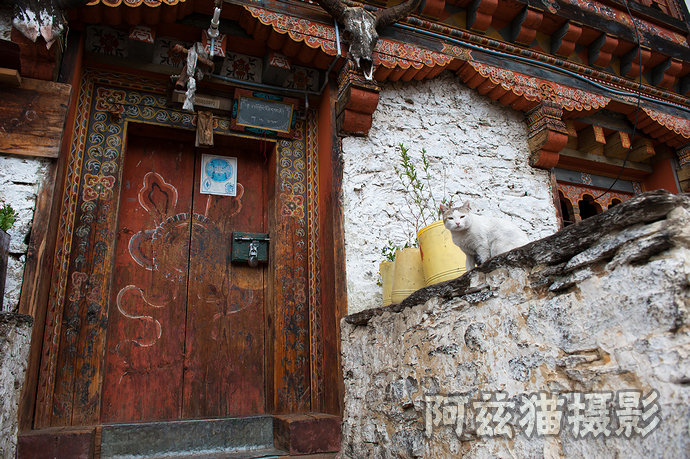

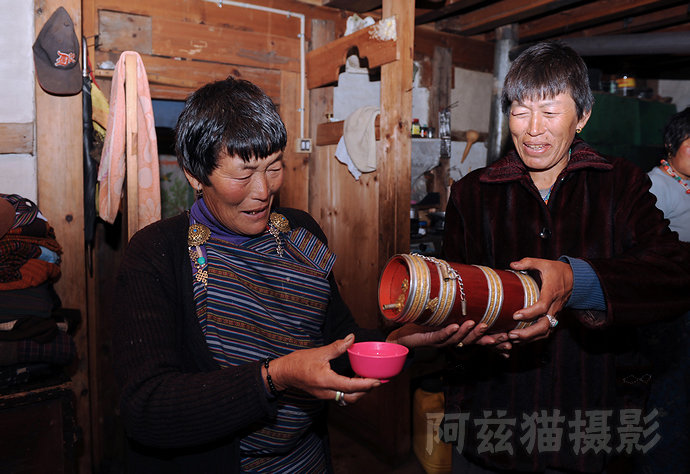
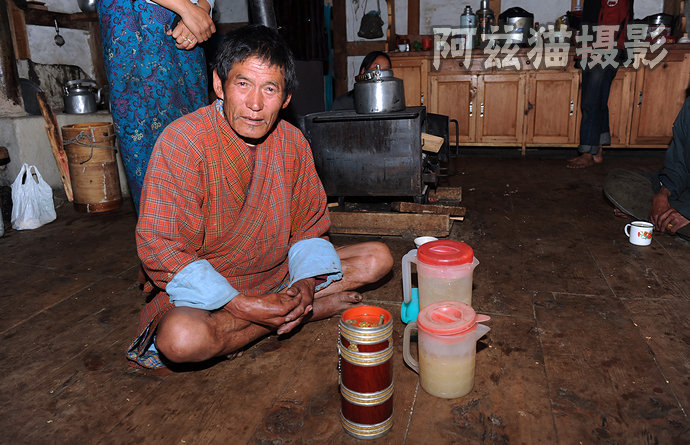
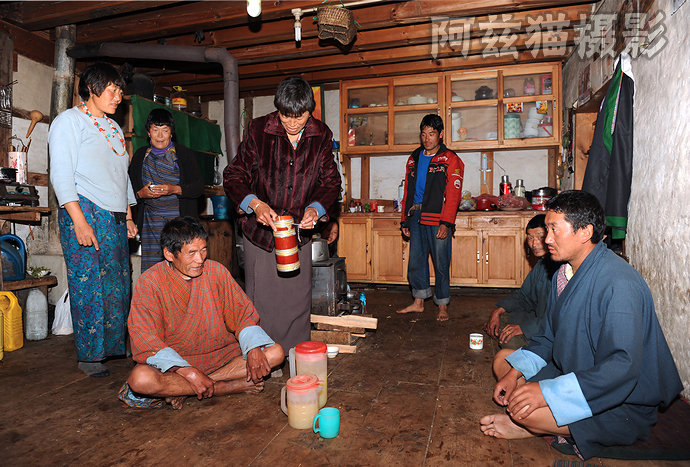

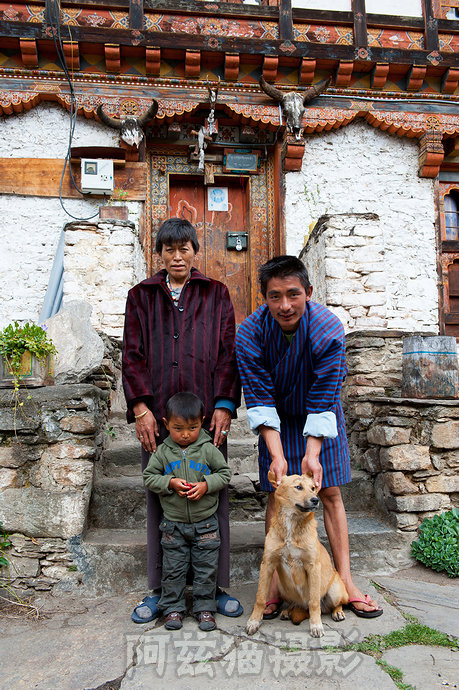
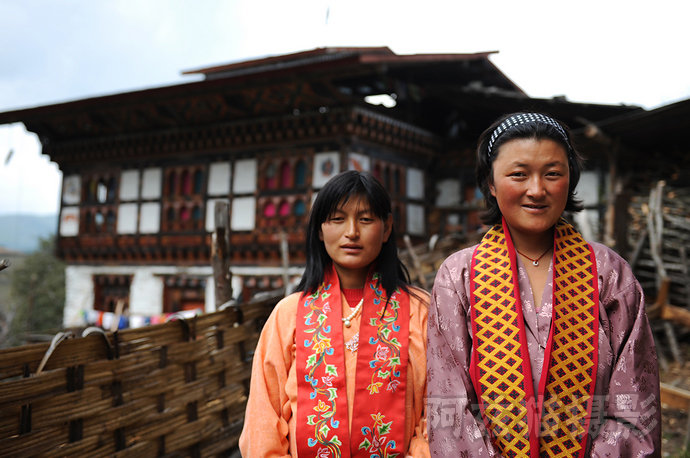
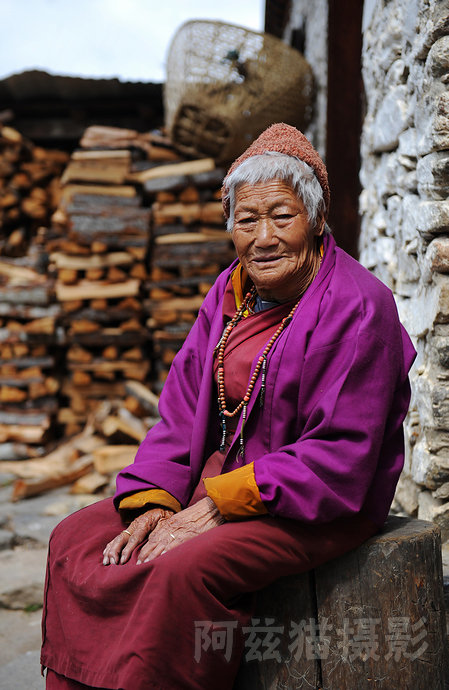
布姆塘乡村生活组图
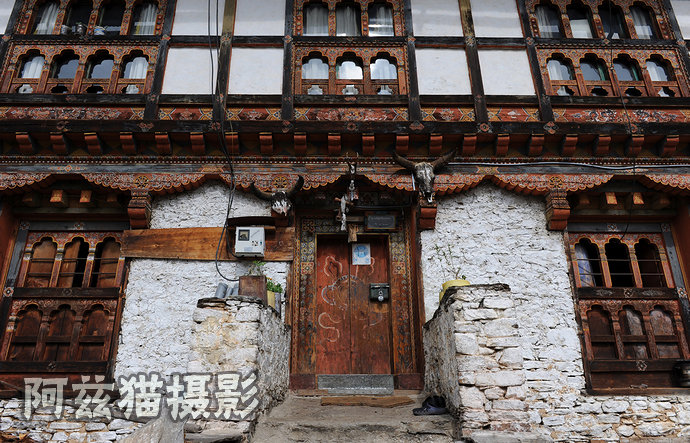
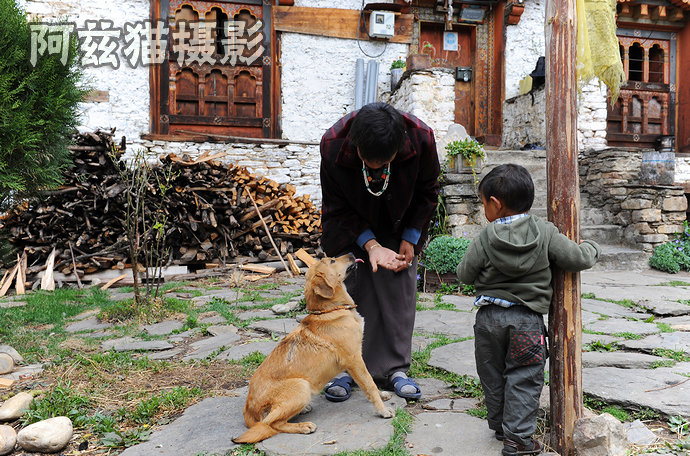
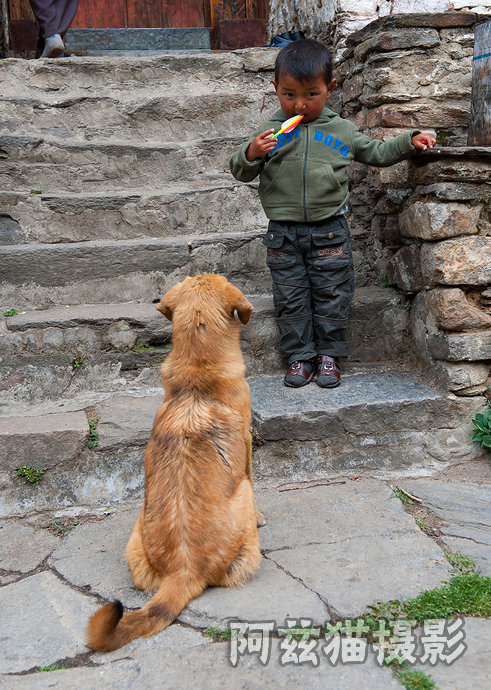
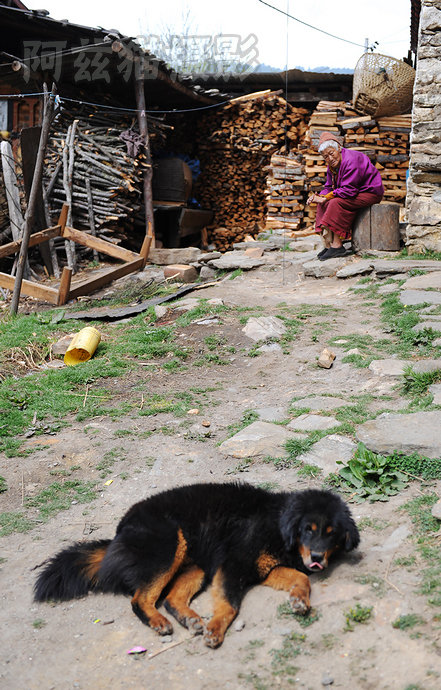

Source HERE
This blog contains collection of remarkable events. It does not intend to support any parties through the collection.































 The Dewathang School in the 1960s. See footnote 31My memories of Dewathang dates back to a trip, when I was accompanying my father Lopen Tashi in 1959. I recall that the caravan comprising of mules and horses from Lhuentsi, Mongar, Trashigang and Pemagatshel with tingling and deafening sleigh bells, decorated with plumes of yak tails and blazing lights from the mirrors placed on the foreheads of the leading mules trudged and panted to climb and descend to the warm plains of Assam. The humbler and small caravans waited for them to pass. The people with loads on their backs took rest by placing their loads on the T-shape walking sticks. The Azhis from Kurtoe and Dashos from the Dzongkhags proudly looked at the meek people whilst the people stole glances at them with envy and admiration at the dazzling beauties, fearful might and the evident wealth. Their trailing dust with fading sights, conversations and gossips temporally relieved them from fatigue. The last ascend of the journey made the people break into songs, so as to irritate and draw attention of the fellow travelers. The lyrics were catchy and are as:‘….Parrots are twittering from Dungsam Dewathang;Paddies are gobbled by parrots;’….The respectable travelers intoned the Dung Sam Jadrung melodiously, particularly in the evening. A little before reaching Dewathang, the story teller2, who was accompanying us pointed his finger at a distant place, where the famous sword, Dungsam Thurma was made with explanation of sharp blade that slashes and dismembers the bodies. The makers of the sword are unknown. A few people say that Pema Lingpa made the swords, which is doubtful. He was never there and his son, Khedup Kuenga Wangpo3 does not mention about it. However, there exist surface iron mine, known as Paer Khi, which is an excreta of iron.As the rolling plains of Dewathang unfolded, we sighed with “oosh” and were enthralled to hear the stories of the legendary businessman, Tsongpon Norbu Zangpo. The story mentions that Tsongpon Norbu Zangpo, with halting for breath after the last ascent left his mongoose“Norbu Neowly”that vomited wealth and prosperity at that spot. Currently, there is a huge stone at the spot. We pray and express our wishes for wealth and prosperity whenever we pass by this historic spot.Turning our heads to glance at the holy Yongla Gonpa,4 the historic monastery, the story teller started the story of Gongsar Jigme Namgyel leading the battle in Dewathang5. Gongsar Jigme Namgyel was accompanied by Agay Sonam Dhendup6. They passed through Khairi Gonpa7 under Pema Gatshel Dzongkhag.The story teller told us that Gongsar Jigme Namgyel stationed himself on the vantage point of Bangsto, which is the Army Mess. It was a forest, when I saw it. The story mentions that before firing, Gongsar Jigme Namgyel surveyed the area through the telescope presented to him by Nana Saheb alias Pasa Raja 8. It is said that there was a prediction of his precious root Master, Jangchhub Tsuendrel, who had predicted that an unknown person of different race would join his court. He was advised to look after that person, as he would be useful to him.We were told that Gongsar Jigme Namgyal identified the target to attack, they waited. Only after the holy Jigme Kuendrel9 performed prayers igniting in a blinding blaze of six rays10 of colours, Gongsar Jigme Namgyel fired his volley of muskets at the British garrison11. Consequently, the wounded elephants and horses stampeded the camps. I thought that it was similar to that of the last battle by General Hannibal12. The surprise attack scattered the mighty British Army and confused them through deception, distraction and encirclement strategies. Their Commanding Officer was killed. The confused and frightened soldiers rushed towards the plains of Assam. They shouted and screamed, “thrangthrang13 zabo”14meaning go straight through huge gully of the Daranga Pass. At that moment, Gongsar Jigme Namgyel charged and severed the hands of the Commander. Two cannons were seized and they were carried to Trongsa. It is confirmed by the British report15 which mentions that:“… the Bhutanese put to flight a force consisting of 10 British Officers and 800 ranks and file, with a loss of two guns, baggage, sick and wounded; that in the final defence of Dewangiri…16“At 5 A.M. on the morning of the 30th January 1865, the Bhutanese managed to creep into the camp at Dewangiri, and commenced cutting the tent ropes. In a few moments the attack became general. The troops fell in, opening fire in the direction where they thought Bhutanese were most exposed. The enemy were thus kept in check until day dawned. As soon as their positions could be made out, the 43rd Native Infantry and Sappers charged them and drove them off, though they held their ground with considerable obstinacy for some time. The enemy also attacked the Jongpen’s house which was in charge of the Police but here also they were driven off. This attack was conducted by the Tongsa Penlop in person. Our losses were Lieutenant Urquhart, R.E., and 4 men killed, and Lieutenant Storey, 43rd Native Infantry, and 31 men wounded. The enemy’s loss was estimated at about 60 men…“Though the Bhutanese had been repulsed they were by no means defeated, as they continued to hover about the camp harassing the garrison for the next three days.They also succeed in cutting off the supply of water, which was conducted into the camp by a bamboo aqueduct from a spring 2,400 yards distant. On the 3rd of February they threw up a stockade within 600 yards of the camp, and during the night succeeded in getting possession of the Daranga Pass, thus cutting off communication by it with the plains. The troops were now getting short of water, as the only source of supply was a small and nearly dry spring.”17The Bhutanese narration was testified by the death of one of the British Officers namely“Shaypa lag Dum” or amputated hand. Pride and patriotism swelled our throbbing hearts but revulsion filled us, when the story teller turned towards the ruins of the Dzong18 scarred by the carnage and destroyed by the second reinforcement of the British Army. It was the episode of bloody war, bitter conflict and brutality of the British as reported 19:“…. As soon as Captain Macdonald’s party got within 100 yards of the Lama’s house, the enemy opened a very heavy fire20 “…The advance was now sounded, and the whole advanced party charged and stormed the position. Part of the enemy fled, but 150 of them barricaded themselves in the large wooden block-house, determined to fight to the last. The only way in (except by the small and only door, which was strongly barricaded, and moreover was not discovered till all was over) was by climbing up the outer wall, which was 14 feet high, between the top of which and the roof there was an opening of about 2 feet. Captain Trevor and Lieutenant Dundas, R.E., and Major Sankey gallantly led the way through this small opening, and were followed by three of four men of the 12th and 29th and were almost immediately joined by other officers and soldiers. In half and hour the firing in this block- house ceased. About 100 dead bodies were found piled up, and underneath them were about 40 men, who had crept there, feigning death. Many of these were fearfully wounded. Whilst this was going on parties were pushed on to the Raja’s house and to the top of the Shobankatta Pass, but the enemy fled so precipitately, that but small loss was inflicted on them, as owing to the intense heat and scarcity of water the troops were too fatigued to pursue. The enemy lost at least 250 in killed and prisoner independent of those who were wounded and got away. Amongst those killed was the Byagha Penlop, the chief in next importance to the Tongsa Penlop himself… In round numbers, our force which attacked Dewangiri consisted of 1800 men of all arms. Dewangiri being thus taken, it was thus decided that as the place was untenable during the rains, to evacuate it. All the fortifications was destroyed and the Raja’s house leveled….”With the guns, motors and larger army, the Bhutanese were no match. Nonetheless, valiant Gongsar Jigme Namgyel led the frontal assault fearlessly as the column of larger army probably was trying to entrap the Bhutanese through pincer movement as the report indicated. At this juncture, the Dungsam Sangsum, possibly the father of Zhongar Apgyan caught him by the collar of his gho and said that it was time to retreat from fighting and to fight another day. We were told that Zhongar Apgyan was probably in his early teens. The oral story corroborates the British Report retrieving the two canons after crossing the Drangmi Zampa. The report mentions that:“In December 1864, the infantry was also involved in the original capture of the Bhutanese fort, and shouldered much of the blame for losing possession of this defensive position to the Bhutanese. In January 1865, the Doctor’s regiment lost two field guns, after which the British Indian forces in the area were significantly reinforced… Doctor Brown’s regiment remained at Darranga, in the Dewangiri area, until March 1866, when records show that the Trongsa Penlop finally returned the two guns, lost to the Bhutanese in early 1865.”21On their pursuit to regain the guns22, their vengeance and atrocities destroyed the Shalikhar Dzong under Pema Gatshel Dzongkhag and unleashed blistering attack on the people. It was a ‘counter-value’ strategy targeting civilian population. The other British contingent fired continuously for a week and destroyed the Shalikhar Dzong. Simultaneously, the British desecrated the Holy Scriptures and spiritual figures by placing them on the path. It was sacrilegious. Terror struck and frightened the people. Thus, they fled towards Lhuenste, Galing, Chhangmi, Radhi, Shongphu, Jangphu, etc. to save themselves from the savage treatment. They were stopped through kasho23 by Azhi Pema Chhoki24 at Trashigang. Thereafter, they were known as Kak-Sungpa meaning “stopped and guarded”.From the ruins left behind by the war in Dewathang, wild trees soared and parrots and other birds chirped with the melancholy songs of recalling the past glories and with note to revive its magnificence. The Dewathang Polytechnic Institution was built at the same spot.The storyteller abruptly ended the story as a line of people headed by Sangna Tshering, Dawa Norbu,25 and the others greeted my father with bellowing and interminable coil of smoke, line of Ara26 in the Jangdop and coloured eggs sprouted from Banchungs 27. My father talked to them about the social development of Dewathang28 followed by serving of hot tea. Soon late Marshay Ama, Mrs. Dhan29 presented glossy English magazines to my father. On that place, a school sprung in 1961, which was at the present golf club. Madam Sangay Doma30 reinvigorated the school, when she was transferred from Khaling in 1963. She served there till 1966. Dasho Ugyen Tshewang, Auditor General was one of her students. He remembers her as a kind and a great teacher. She gave me three photographs31 and information of the Dewathang School.Dewathang witnessed another historic moment of the military operation, when His Majesty Jigme Singye Wangchuck on December 2003 proclaimed the prophetic words:The war of Dewangiri was the last war with foreigners in 1865… At that time, the foreigners came to conquer Bhutan very easily as our people were poor without any army and weapons. They brought their army and artilleries to Dewangiri or Dewathang. However, they lost the war and their artilleries came into our possession… It has been almost 138 years. Today, we fight to win the war as Gongsar Jigme Namgyel had done.PRESS HANDOUT of December 15, 2003 stated:“Today, Bhutan is faced with the most difficult period in its recent history, as its security forces have launched operations to flush out the militants from the country.”P.B Saha from Kolkata on 29 December 2003 reported in Times of India under the caption “Bravely fought the King” that: “…Egged on by nationalistic spirit, the king undertook the responsibility of leading his army. He braved enormous risks with remarkable courage and aplomb to confront the militants. The king was largely successful in dismantling many camps – some even in the remote areas – flushing out the leaders of the various outfits…. “The king’s role is laudable. He was also concerned about the security of the innocent population while carrying out Operation Flush Out. That he led his troops into battle proves his military prowess. He is perhaps the only king to have led his army into battlefield.”The military operation32 was over within two days. The “Operation ALL Clear” was a resounding success.33 Though, I will never know the truth of meticulous planning, surgical operation and military genius of 2003, with the deepening mysticism and growing hypothesis, Dewathang continues its journey with enduring history of changing the opinions from contempt to adulation and redeemed the crowning glory of the Armed Forces of Bhutan. The operation reversed all the conventional military strategies and tactics. I cannot escape from deductions, inferences and fertile imagination. His Majesty applied minimum military force to maximum tactical and strategic effect34 with surgical strike35resembling the Blitzkrieg. It was a military genius of His Majesty the Fourth Druk Gyalpo to implement tactical and operational strategy of warfare. Tactical and operational strategy reflected many allegorical military strategies. The military lessons, tactical and strategic maneuvers of the operation are reminiscent of the operation with military and political objectives, assessment of the enemy, pre-emptive attack of striking first: striking hard and striking to eliminate retaliation with three striking methods, exist strategy, urban warfare of speed36 and surprise.True to its name, Ten-sung,37 the Armed Forces protected and guarded the eras and are the protector of the boundary in the four directions. The Armed Forces of Bhutan are the true nobility of our country38, protector of peace and sovereignty.Contributed by Sonam Tobgye, Thrimchi Lyonpo1. The British referred to it as Dewangiri. It was also known as Kipsay Thang before 1956. “REPORT ON THE RELATIONS BETWEEN THE BRITISH GOVERNMENT AND BHUTAN, DURING 1905 – 1906. This is the first time that we have come into close friendly relations with Bhutan. Previous to this our knowledge of Bhutan consisted of the journeys of Turner, Pemberton and Eden. The former was received well. He went from Buxa up to Paro on the way to Shigatse. Pemberton went from Dewangiri via Lhuntse, Byagha, Punakha, etc., and returned via Buxa. He was treated with veiled hostility the whole way and formed a very poor opinion of the people and their habits. Eden’s mission proceeded as far as Punakha having entered Bhutan by Sibchu. He was grossly insulted and had to fly for his life.”2. He was one of my father’s staff.3. He was born on 1504 in Bumthang Tamzhing to Terton Pema lingpa and Yum Bumdenma. He is the reincarnation of Gyalsey Yeshay Bumpa of Kham Khathog and also of Dramzey Buddhanacreth. The Kudung of Khedup Kuenga Wangpo is there in Trashigang Bidung.4. YonglaGonpa is one of the most sacred religious sites in eastern Bhutan. It was established by Lam Jigme Kuendrel, a foremost disciple of Rigzin Lingpa (1729-1798) a great Nyingma Lama and a treasure discoverer.5. Dungsam Dewangthang is mentioned by Kuenkhen Jigme Lingpa in Jigling Kabum page 45.6. He is a brother of Zhabdrung Jigme Norbu. He is also known as lamai Zimpon or Kuzhog Drameytsip. He is the son of Tenzin Chogyal. He had taken many captives to Dramitse.7. Khedup Kuenga consecrated it in 1735. It was inherited by his son, Pema Jamtsho.8. According to passionate researcher, Tshering Tashi “Nana Saheb was the heir of the last Peshwa of the Maratha Confederacy. He played a leading role in the Indian Mutiny and as a punishment confined him to one of his places. According to HRRGM Ashi KCW, Nana Saheb escaped to Nepal where the King stole his wife and his jewels. Disheartened he walked and landed up in Bhutan where he met Jigme Namgyel and became his adviser and known as Pasa Raja. J Namgyel gave him a room in the Trongsa Dzong and it can still be seen today. Lopen Nyapchi read about Nana Saheb in an old document. There is historical novel written on him by HMRGM friend Manohar Malgonkar called the Devil’s Wind but his years in Bhutan are a blank.” The other source mentioned that he was supposed to be a relative of legendary Raja Ranjit Singh.9. The center of Bhutan Studies mentioned: “Now, Jigme Kundrel, born in Wang Dhaklungkhar and the would-be disciple of Jigme Lingpa was in Trongsa having entered the service of “Garpa” under the Royal Government of Bhutan. He was assigned the charge of the meat store keeper and during the five years of his service in the store, he had to resort to slaughtering countless number of animals which inevitably led to regret and sorrow. As a result, he pleaded for resignation from such a service, but was not released and had to serve in the same capacity for another five years. Subsequently, his sorrow for everlasting cycle of life and pity for the sins knew no bounds and finally absconded from service. As fate would have it, after traveling day and night, he arrived at Samye Chhimphur where he met the most outstanding and accomplished treasure discoverer Rigzin Jigme Lingpa. His sorrow and empathy further increased and he secretly went to see Terton Jigme Lingpa and fell at his feet. Eventually, he received discourses on and accomplished the “Longchen Nyingthing” tradition of Buddhism … He was, then, instructed by Terton Rigzin Pema Lingpa to proceed to “Lhomon” (the country in the south) where an abode of Vajra indicating wrath existed … Here, Jigme Kundrel would be blessed with the “Dorji Phurba” (Vajra-Kilaya) doctrine of Buddhism and would be able to restrain conflicts that would, otherwise, prove to be harmful to the sentient beings. In accordance with this prophecy, he traveled from Lhodrak through Monla Karchung and arrived in Bumthang. He visited the top of Wangthangla in Ura and pondered on the possibility of that particular place being the site prophesied by Terton Rigzin Jigme Lingpa. Here appeared the goddess Dechhen Gyalmo who pointed towards Yongla Gonpa and instructed him to go there, as that was the place of prophecy where Jigme Kundrel could fulfill the needs of the sentient beings. Having arrived at Yongla, he entered into meditation on the core subject of the religion and subsequently turned the wheel of the Dharma amidst many eminent and ordinary people … During the visit of Gongsa Jigme Namgyel to Dungsam, he visited Yongla and on his return to Tongsa, Sungkhorpa Tashi Chhoegyal was sent to repair the Lhakhang followed by addition of about seven households to the list of followers (Drapa) during Gelong Sangey Wangdi’s time.”10. In Bhutanese, it is dangerous sign.11. British intrusion 1772-1907, Bhutan had no regular army, and what forces existed were composed of dzong guards armed with matchlocks, bows and arrows, swords, knives, and catapults. Some of these dzong guards, carrying shields and wearing chainmails armor, engaged the well equipped British forces.12. Battle of Zama: The Roman cavalry won an early victory by swiftly routing the Carthaginian horse, and standard Roman tactics for limiting the effectiveness of the Carthaginian war elephants were successful, including playing trumpets to frighten the elephants into running into the Carthaginian lines.13. “thrangthrang” means “Straight” in Sharchhokpa language.14. “zabo” means “go” in Assamese language.15. “A SHORT MILTIARY REPORT ON BHUTAN ISSUED BY THE INTELLIGENCE BRANCH OF THE QUARTER MASTER GENERAL’S DEPARTMENT SIMLA PRINTED AT THE GOVERNMENT MONTOTYPE OFFICE 1906” (I gratefully acknowledge Tshering Tashi for providing the documents and appreciate his prodigious and extensive research.)16. Ibid Page 124.17. Ibid Page 128.18. That Dzong had special significance to my wife’s families. Dungsam Sangsum married Langamo, a woman from Dewathang, who was the descendent of Khedrup Kuenga Wangpo, who passed there in 1534 on his way for pilgrimage. Possibly the photograph of “A recently discovered photograph annotated on the back Dr Brown and Bhootan patient, a Princess” in 1865 contributed by Tshering Tashi & Nicholas Rhodes to Kuensel on Perspective 13 February, 2011.19. Description of the Bhutanese Army by the British Report of the deployment of the second reinforcement with larger forces and pronged military operation contrast with the reality.20. Supra note 14, Page130.21. Supra note 12.22. Detail differs from the oral story but the British Reports corroborate the larger scheme. 23. Kasho or royal decree is mentioned by late Dasho Tenzin Dorji in his book “a family genealogy titled “Clear Crystal Mirror,” (2007).24. Queen of Gongsar Jigmi Namgyel, who was very clever.25. Learned Clerk at the court of Her Royal Highness AzhiWangmo.26. Local drink.27. Bangchungs means ‘Bamboo baskets’.28. Record of my father’s diary dating 6th March 1959 mentioned “We are trying to form a Dewathang peoples society, we are on the first step and we don’t think we will be successful. Still we shall try.” Similarly, 9th March recorded “… went to see the water canal up to the source…”29. E. Dhan started a school in Dewathang in 1945. Lopen Sherab, Towpo, Orong Chhoiten Tshering, Lata Wangchuk and other were his students.30. She was my teacher in Trashigang School in 1962 and she was transferred to Khaling in the same year to open a school constructed out of wooden planks and shingle roof. The other teachers were Dzongkha Lopen Ugyen and Mr. KB Pradhan. There were 26 students.31. In that photo madam Sangay Dolma was talking to Mr. Indrajit Bahadur Singh, who was the Political Officer for Bhutan based in Sikkim. The Indian Officer behind them was General Jeganathan, the Chief Engineer of DANTAK Border Road. Unfortunately, the Bhutanese Officers and the students could not be identified.32. Suo Moto Statement in both House of Parliament 15th December 2003, “Government of India strongly supports the military operations launched by the Royal Government of Bhutan against Indian insurgent groups operating from camps in that country.33. Dipankar Banerjee & Bidhan Laishram, “Bhutan’s Operation All Clear”: Implications for Insurgency and Security Cooperation”, Institute of Peace and Conflict Studies, Issue No. 18, January 2004, p. 234. General Giap.35. It resembles Clausewitz’s “the asymmetrical relationship between attack and defense … Military genius”36. The “speed factor” of Rommel’s instinctive fighting genius during the first world war.37. In Buddhism, The Army in Bhutan has very good nomenclature in Bhutan. It is BstansRung, which means the protector of era encompassing past, present and future. Magmi means defence force. 38. Napoleon Bonaparte told that “the army is the true nobility of our country” (August 15, 1769 and May 5, 1821).
The Dewathang School in the 1960s. See footnote 31My memories of Dewathang dates back to a trip, when I was accompanying my father Lopen Tashi in 1959. I recall that the caravan comprising of mules and horses from Lhuentsi, Mongar, Trashigang and Pemagatshel with tingling and deafening sleigh bells, decorated with plumes of yak tails and blazing lights from the mirrors placed on the foreheads of the leading mules trudged and panted to climb and descend to the warm plains of Assam. The humbler and small caravans waited for them to pass. The people with loads on their backs took rest by placing their loads on the T-shape walking sticks. The Azhis from Kurtoe and Dashos from the Dzongkhags proudly looked at the meek people whilst the people stole glances at them with envy and admiration at the dazzling beauties, fearful might and the evident wealth. Their trailing dust with fading sights, conversations and gossips temporally relieved them from fatigue. The last ascend of the journey made the people break into songs, so as to irritate and draw attention of the fellow travelers. The lyrics were catchy and are as:‘….Parrots are twittering from Dungsam Dewathang;Paddies are gobbled by parrots;’….The respectable travelers intoned the Dung Sam Jadrung melodiously, particularly in the evening. A little before reaching Dewathang, the story teller2, who was accompanying us pointed his finger at a distant place, where the famous sword, Dungsam Thurma was made with explanation of sharp blade that slashes and dismembers the bodies. The makers of the sword are unknown. A few people say that Pema Lingpa made the swords, which is doubtful. He was never there and his son, Khedup Kuenga Wangpo3 does not mention about it. However, there exist surface iron mine, known as Paer Khi, which is an excreta of iron.As the rolling plains of Dewathang unfolded, we sighed with “oosh” and were enthralled to hear the stories of the legendary businessman, Tsongpon Norbu Zangpo. The story mentions that Tsongpon Norbu Zangpo, with halting for breath after the last ascent left his mongoose“Norbu Neowly”that vomited wealth and prosperity at that spot. Currently, there is a huge stone at the spot. We pray and express our wishes for wealth and prosperity whenever we pass by this historic spot.Turning our heads to glance at the holy Yongla Gonpa,4 the historic monastery, the story teller started the story of Gongsar Jigme Namgyel leading the battle in Dewathang5. Gongsar Jigme Namgyel was accompanied by Agay Sonam Dhendup6. They passed through Khairi Gonpa7 under Pema Gatshel Dzongkhag.The story teller told us that Gongsar Jigme Namgyel stationed himself on the vantage point of Bangsto, which is the Army Mess. It was a forest, when I saw it. The story mentions that before firing, Gongsar Jigme Namgyel surveyed the area through the telescope presented to him by Nana Saheb alias Pasa Raja 8. It is said that there was a prediction of his precious root Master, Jangchhub Tsuendrel, who had predicted that an unknown person of different race would join his court. He was advised to look after that person, as he would be useful to him.We were told that Gongsar Jigme Namgyal identified the target to attack, they waited. Only after the holy Jigme Kuendrel9 performed prayers igniting in a blinding blaze of six rays10 of colours, Gongsar Jigme Namgyel fired his volley of muskets at the British garrison11. Consequently, the wounded elephants and horses stampeded the camps. I thought that it was similar to that of the last battle by General Hannibal12. The surprise attack scattered the mighty British Army and confused them through deception, distraction and encirclement strategies. Their Commanding Officer was killed. The confused and frightened soldiers rushed towards the plains of Assam. They shouted and screamed, “thrangthrang13 zabo”14meaning go straight through huge gully of the Daranga Pass. At that moment, Gongsar Jigme Namgyel charged and severed the hands of the Commander. Two cannons were seized and they were carried to Trongsa. It is confirmed by the British report15 which mentions that:“… the Bhutanese put to flight a force consisting of 10 British Officers and 800 ranks and file, with a loss of two guns, baggage, sick and wounded; that in the final defence of Dewangiri…16“At 5 A.M. on the morning of the 30th January 1865, the Bhutanese managed to creep into the camp at Dewangiri, and commenced cutting the tent ropes. In a few moments the attack became general. The troops fell in, opening fire in the direction where they thought Bhutanese were most exposed. The enemy were thus kept in check until day dawned. As soon as their positions could be made out, the 43rd Native Infantry and Sappers charged them and drove them off, though they held their ground with considerable obstinacy for some time. The enemy also attacked the Jongpen’s house which was in charge of the Police but here also they were driven off. This attack was conducted by the Tongsa Penlop in person. Our losses were Lieutenant Urquhart, R.E., and 4 men killed, and Lieutenant Storey, 43rd Native Infantry, and 31 men wounded. The enemy’s loss was estimated at about 60 men…“Though the Bhutanese had been repulsed they were by no means defeated, as they continued to hover about the camp harassing the garrison for the next three days.They also succeed in cutting off the supply of water, which was conducted into the camp by a bamboo aqueduct from a spring 2,400 yards distant. On the 3rd of February they threw up a stockade within 600 yards of the camp, and during the night succeeded in getting possession of the Daranga Pass, thus cutting off communication by it with the plains. The troops were now getting short of water, as the only source of supply was a small and nearly dry spring.”17The Bhutanese narration was testified by the death of one of the British Officers namely“Shaypa lag Dum” or amputated hand. Pride and patriotism swelled our throbbing hearts but revulsion filled us, when the story teller turned towards the ruins of the Dzong18 scarred by the carnage and destroyed by the second reinforcement of the British Army. It was the episode of bloody war, bitter conflict and brutality of the British as reported 19:“…. As soon as Captain Macdonald’s party got within 100 yards of the Lama’s house, the enemy opened a very heavy fire20 “…The advance was now sounded, and the whole advanced party charged and stormed the position. Part of the enemy fled, but 150 of them barricaded themselves in the large wooden block-house, determined to fight to the last. The only way in (except by the small and only door, which was strongly barricaded, and moreover was not discovered till all was over) was by climbing up the outer wall, which was 14 feet high, between the top of which and the roof there was an opening of about 2 feet. Captain Trevor and Lieutenant Dundas, R.E., and Major Sankey gallantly led the way through this small opening, and were followed by three of four men of the 12th and 29th and were almost immediately joined by other officers and soldiers. In half and hour the firing in this block- house ceased. About 100 dead bodies were found piled up, and underneath them were about 40 men, who had crept there, feigning death. Many of these were fearfully wounded. Whilst this was going on parties were pushed on to the Raja’s house and to the top of the Shobankatta Pass, but the enemy fled so precipitately, that but small loss was inflicted on them, as owing to the intense heat and scarcity of water the troops were too fatigued to pursue. The enemy lost at least 250 in killed and prisoner independent of those who were wounded and got away. Amongst those killed was the Byagha Penlop, the chief in next importance to the Tongsa Penlop himself… In round numbers, our force which attacked Dewangiri consisted of 1800 men of all arms. Dewangiri being thus taken, it was thus decided that as the place was untenable during the rains, to evacuate it. All the fortifications was destroyed and the Raja’s house leveled….”With the guns, motors and larger army, the Bhutanese were no match. Nonetheless, valiant Gongsar Jigme Namgyel led the frontal assault fearlessly as the column of larger army probably was trying to entrap the Bhutanese through pincer movement as the report indicated. At this juncture, the Dungsam Sangsum, possibly the father of Zhongar Apgyan caught him by the collar of his gho and said that it was time to retreat from fighting and to fight another day. We were told that Zhongar Apgyan was probably in his early teens. The oral story corroborates the British Report retrieving the two canons after crossing the Drangmi Zampa. The report mentions that:“In December 1864, the infantry was also involved in the original capture of the Bhutanese fort, and shouldered much of the blame for losing possession of this defensive position to the Bhutanese. In January 1865, the Doctor’s regiment lost two field guns, after which the British Indian forces in the area were significantly reinforced… Doctor Brown’s regiment remained at Darranga, in the Dewangiri area, until March 1866, when records show that the Trongsa Penlop finally returned the two guns, lost to the Bhutanese in early 1865.”21On their pursuit to regain the guns22, their vengeance and atrocities destroyed the Shalikhar Dzong under Pema Gatshel Dzongkhag and unleashed blistering attack on the people. It was a ‘counter-value’ strategy targeting civilian population. The other British contingent fired continuously for a week and destroyed the Shalikhar Dzong. Simultaneously, the British desecrated the Holy Scriptures and spiritual figures by placing them on the path. It was sacrilegious. Terror struck and frightened the people. Thus, they fled towards Lhuenste, Galing, Chhangmi, Radhi, Shongphu, Jangphu, etc. to save themselves from the savage treatment. They were stopped through kasho23 by Azhi Pema Chhoki24 at Trashigang. Thereafter, they were known as Kak-Sungpa meaning “stopped and guarded”.From the ruins left behind by the war in Dewathang, wild trees soared and parrots and other birds chirped with the melancholy songs of recalling the past glories and with note to revive its magnificence. The Dewathang Polytechnic Institution was built at the same spot.The storyteller abruptly ended the story as a line of people headed by Sangna Tshering, Dawa Norbu,25 and the others greeted my father with bellowing and interminable coil of smoke, line of Ara26 in the Jangdop and coloured eggs sprouted from Banchungs 27. My father talked to them about the social development of Dewathang28 followed by serving of hot tea. Soon late Marshay Ama, Mrs. Dhan29 presented glossy English magazines to my father. On that place, a school sprung in 1961, which was at the present golf club. Madam Sangay Doma30 reinvigorated the school, when she was transferred from Khaling in 1963. She served there till 1966. Dasho Ugyen Tshewang, Auditor General was one of her students. He remembers her as a kind and a great teacher. She gave me three photographs31 and information of the Dewathang School.Dewathang witnessed another historic moment of the military operation, when His Majesty Jigme Singye Wangchuck on December 2003 proclaimed the prophetic words:The war of Dewangiri was the last war with foreigners in 1865… At that time, the foreigners came to conquer Bhutan very easily as our people were poor without any army and weapons. They brought their army and artilleries to Dewangiri or Dewathang. However, they lost the war and their artilleries came into our possession… It has been almost 138 years. Today, we fight to win the war as Gongsar Jigme Namgyel had done.PRESS HANDOUT of December 15, 2003 stated:“Today, Bhutan is faced with the most difficult period in its recent history, as its security forces have launched operations to flush out the militants from the country.”P.B Saha from Kolkata on 29 December 2003 reported in Times of India under the caption “Bravely fought the King” that: “…Egged on by nationalistic spirit, the king undertook the responsibility of leading his army. He braved enormous risks with remarkable courage and aplomb to confront the militants. The king was largely successful in dismantling many camps – some even in the remote areas – flushing out the leaders of the various outfits…. “The king’s role is laudable. He was also concerned about the security of the innocent population while carrying out Operation Flush Out. That he led his troops into battle proves his military prowess. He is perhaps the only king to have led his army into battlefield.”The military operation32 was over within two days. The “Operation ALL Clear” was a resounding success.33 Though, I will never know the truth of meticulous planning, surgical operation and military genius of 2003, with the deepening mysticism and growing hypothesis, Dewathang continues its journey with enduring history of changing the opinions from contempt to adulation and redeemed the crowning glory of the Armed Forces of Bhutan. The operation reversed all the conventional military strategies and tactics. I cannot escape from deductions, inferences and fertile imagination. His Majesty applied minimum military force to maximum tactical and strategic effect34 with surgical strike35resembling the Blitzkrieg. It was a military genius of His Majesty the Fourth Druk Gyalpo to implement tactical and operational strategy of warfare. Tactical and operational strategy reflected many allegorical military strategies. The military lessons, tactical and strategic maneuvers of the operation are reminiscent of the operation with military and political objectives, assessment of the enemy, pre-emptive attack of striking first: striking hard and striking to eliminate retaliation with three striking methods, exist strategy, urban warfare of speed36 and surprise.True to its name, Ten-sung,37 the Armed Forces protected and guarded the eras and are the protector of the boundary in the four directions. The Armed Forces of Bhutan are the true nobility of our country38, protector of peace and sovereignty.Contributed by Sonam Tobgye, Thrimchi Lyonpo1. The British referred to it as Dewangiri. It was also known as Kipsay Thang before 1956. “REPORT ON THE RELATIONS BETWEEN THE BRITISH GOVERNMENT AND BHUTAN, DURING 1905 – 1906. This is the first time that we have come into close friendly relations with Bhutan. Previous to this our knowledge of Bhutan consisted of the journeys of Turner, Pemberton and Eden. The former was received well. He went from Buxa up to Paro on the way to Shigatse. Pemberton went from Dewangiri via Lhuntse, Byagha, Punakha, etc., and returned via Buxa. He was treated with veiled hostility the whole way and formed a very poor opinion of the people and their habits. Eden’s mission proceeded as far as Punakha having entered Bhutan by Sibchu. He was grossly insulted and had to fly for his life.”2. He was one of my father’s staff.3. He was born on 1504 in Bumthang Tamzhing to Terton Pema lingpa and Yum Bumdenma. He is the reincarnation of Gyalsey Yeshay Bumpa of Kham Khathog and also of Dramzey Buddhanacreth. The Kudung of Khedup Kuenga Wangpo is there in Trashigang Bidung.4. YonglaGonpa is one of the most sacred religious sites in eastern Bhutan. It was established by Lam Jigme Kuendrel, a foremost disciple of Rigzin Lingpa (1729-1798) a great Nyingma Lama and a treasure discoverer.5. Dungsam Dewangthang is mentioned by Kuenkhen Jigme Lingpa in Jigling Kabum page 45.6. He is a brother of Zhabdrung Jigme Norbu. He is also known as lamai Zimpon or Kuzhog Drameytsip. He is the son of Tenzin Chogyal. He had taken many captives to Dramitse.7. Khedup Kuenga consecrated it in 1735. It was inherited by his son, Pema Jamtsho.8. According to passionate researcher, Tshering Tashi “Nana Saheb was the heir of the last Peshwa of the Maratha Confederacy. He played a leading role in the Indian Mutiny and as a punishment confined him to one of his places. According to HRRGM Ashi KCW, Nana Saheb escaped to Nepal where the King stole his wife and his jewels. Disheartened he walked and landed up in Bhutan where he met Jigme Namgyel and became his adviser and known as Pasa Raja. J Namgyel gave him a room in the Trongsa Dzong and it can still be seen today. Lopen Nyapchi read about Nana Saheb in an old document. There is historical novel written on him by HMRGM friend Manohar Malgonkar called the Devil’s Wind but his years in Bhutan are a blank.” The other source mentioned that he was supposed to be a relative of legendary Raja Ranjit Singh.9. The center of Bhutan Studies mentioned: “Now, Jigme Kundrel, born in Wang Dhaklungkhar and the would-be disciple of Jigme Lingpa was in Trongsa having entered the service of “Garpa” under the Royal Government of Bhutan. He was assigned the charge of the meat store keeper and during the five years of his service in the store, he had to resort to slaughtering countless number of animals which inevitably led to regret and sorrow. As a result, he pleaded for resignation from such a service, but was not released and had to serve in the same capacity for another five years. Subsequently, his sorrow for everlasting cycle of life and pity for the sins knew no bounds and finally absconded from service. As fate would have it, after traveling day and night, he arrived at Samye Chhimphur where he met the most outstanding and accomplished treasure discoverer Rigzin Jigme Lingpa. His sorrow and empathy further increased and he secretly went to see Terton Jigme Lingpa and fell at his feet. Eventually, he received discourses on and accomplished the “Longchen Nyingthing” tradition of Buddhism … He was, then, instructed by Terton Rigzin Pema Lingpa to proceed to “Lhomon” (the country in the south) where an abode of Vajra indicating wrath existed … Here, Jigme Kundrel would be blessed with the “Dorji Phurba” (Vajra-Kilaya) doctrine of Buddhism and would be able to restrain conflicts that would, otherwise, prove to be harmful to the sentient beings. In accordance with this prophecy, he traveled from Lhodrak through Monla Karchung and arrived in Bumthang. He visited the top of Wangthangla in Ura and pondered on the possibility of that particular place being the site prophesied by Terton Rigzin Jigme Lingpa. Here appeared the goddess Dechhen Gyalmo who pointed towards Yongla Gonpa and instructed him to go there, as that was the place of prophecy where Jigme Kundrel could fulfill the needs of the sentient beings. Having arrived at Yongla, he entered into meditation on the core subject of the religion and subsequently turned the wheel of the Dharma amidst many eminent and ordinary people … During the visit of Gongsa Jigme Namgyel to Dungsam, he visited Yongla and on his return to Tongsa, Sungkhorpa Tashi Chhoegyal was sent to repair the Lhakhang followed by addition of about seven households to the list of followers (Drapa) during Gelong Sangey Wangdi’s time.”10. In Bhutanese, it is dangerous sign.11. British intrusion 1772-1907, Bhutan had no regular army, and what forces existed were composed of dzong guards armed with matchlocks, bows and arrows, swords, knives, and catapults. Some of these dzong guards, carrying shields and wearing chainmails armor, engaged the well equipped British forces.12. Battle of Zama: The Roman cavalry won an early victory by swiftly routing the Carthaginian horse, and standard Roman tactics for limiting the effectiveness of the Carthaginian war elephants were successful, including playing trumpets to frighten the elephants into running into the Carthaginian lines.13. “thrangthrang” means “Straight” in Sharchhokpa language.14. “zabo” means “go” in Assamese language.15. “A SHORT MILTIARY REPORT ON BHUTAN ISSUED BY THE INTELLIGENCE BRANCH OF THE QUARTER MASTER GENERAL’S DEPARTMENT SIMLA PRINTED AT THE GOVERNMENT MONTOTYPE OFFICE 1906” (I gratefully acknowledge Tshering Tashi for providing the documents and appreciate his prodigious and extensive research.)16. Ibid Page 124.17. Ibid Page 128.18. That Dzong had special significance to my wife’s families. Dungsam Sangsum married Langamo, a woman from Dewathang, who was the descendent of Khedrup Kuenga Wangpo, who passed there in 1534 on his way for pilgrimage. Possibly the photograph of “A recently discovered photograph annotated on the back Dr Brown and Bhootan patient, a Princess” in 1865 contributed by Tshering Tashi & Nicholas Rhodes to Kuensel on Perspective 13 February, 2011.19. Description of the Bhutanese Army by the British Report of the deployment of the second reinforcement with larger forces and pronged military operation contrast with the reality.20. Supra note 14, Page130.21. Supra note 12.22. Detail differs from the oral story but the British Reports corroborate the larger scheme. 23. Kasho or royal decree is mentioned by late Dasho Tenzin Dorji in his book “a family genealogy titled “Clear Crystal Mirror,” (2007).24. Queen of Gongsar Jigmi Namgyel, who was very clever.25. Learned Clerk at the court of Her Royal Highness AzhiWangmo.26. Local drink.27. Bangchungs means ‘Bamboo baskets’.28. Record of my father’s diary dating 6th March 1959 mentioned “We are trying to form a Dewathang peoples society, we are on the first step and we don’t think we will be successful. Still we shall try.” Similarly, 9th March recorded “… went to see the water canal up to the source…”29. E. Dhan started a school in Dewathang in 1945. Lopen Sherab, Towpo, Orong Chhoiten Tshering, Lata Wangchuk and other were his students.30. She was my teacher in Trashigang School in 1962 and she was transferred to Khaling in the same year to open a school constructed out of wooden planks and shingle roof. The other teachers were Dzongkha Lopen Ugyen and Mr. KB Pradhan. There were 26 students.31. In that photo madam Sangay Dolma was talking to Mr. Indrajit Bahadur Singh, who was the Political Officer for Bhutan based in Sikkim. The Indian Officer behind them was General Jeganathan, the Chief Engineer of DANTAK Border Road. Unfortunately, the Bhutanese Officers and the students could not be identified.32. Suo Moto Statement in both House of Parliament 15th December 2003, “Government of India strongly supports the military operations launched by the Royal Government of Bhutan against Indian insurgent groups operating from camps in that country.33. Dipankar Banerjee & Bidhan Laishram, “Bhutan’s Operation All Clear”: Implications for Insurgency and Security Cooperation”, Institute of Peace and Conflict Studies, Issue No. 18, January 2004, p. 234. General Giap.35. It resembles Clausewitz’s “the asymmetrical relationship between attack and defense … Military genius”36. The “speed factor” of Rommel’s instinctive fighting genius during the first world war.37. In Buddhism, The Army in Bhutan has very good nomenclature in Bhutan. It is BstansRung, which means the protector of era encompassing past, present and future. Magmi means defence force. 38. Napoleon Bonaparte told that “the army is the true nobility of our country” (August 15, 1769 and May 5, 1821).